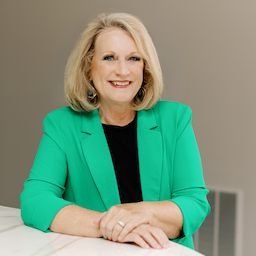How to Start Homeschooling in 3 Easy Steps - Julie Naturally
These days, everyone seems to know how to start homeschooling, even people who have never homeschooled! Public school textbook companies turned homeschool curriculum providers tell parents to use their books. Virtual charter schools invite parents to sign up and shell out a few thousand dollars for their homeschool help. But, a vibrant homeschooling community rich with wisdom and experience has existed for at least three decades now! Who knows better about how to start homeschooling than that 2.5 million strong (not including all the graduates…) community?
I have now been homeschooling for almost two decades myself. Two of my children have graduated and two are still finishing up. Some of my friends have been doing this homeschooling thing far longer than I have. But, I have learned a lot over the years. Here’s what I would say about how to start homeschooling.

Before I get into my three easy steps, I have to tell you about my homeschooling philosophy. We are Christian unschoolers. That means that my children have had a big say in what we learn about and how we do things. But, following my three steps works no matter what homeschooling method you choose to follow. There are at least eight different styles of homeschooling, including unschooling. All of them (except one) start with these three steps.
Step One: Renew Your Mind
Let go of all that you think you know about how children learn. Let go of the conventions of school. It does not take six hours for children to “do school” each day. It doesn’t even take six years to learn elementary math! The scope and sequence charts of the public school are not the laws of learning for each year of your child’s life. And, textbooks do not teach all there is to know about something, nor are they the best/only/preferred way for children to learn. Just let go of it. All of it. It no longer serves you and your family. In fact, if you don’t let go of it, it may actually damage your relationships with your children. That would basically sabotage all your efforts to successfully homeschool.
Many veteran homeschoolers, myself included, recommend a de-schooling period. This means that for a period of time, you don’t do anything that looks like lessons. Instead, you basically have an extended summer vacation together, just having fun. Some recommend taking one month for each year your child has spent in school. Others say one week. Just do what you feel comfortable with. But, do take some time to shed all those myths about school.
Step 2: Read. Read A Lot.
No matter what homeschooling method/style you choose, books form the core. But, not just any books. Choose autobiographies, biographies, historical fiction, classic novels at their reading level, award-winning picture books, and of course, allow them to choose their own favorites. Have a read-aloud time each day. Help them fall in love with reading if they haven’t already. You can find inspiration for what books to get at Ambleside Online, homeschool catalogs (try Veritas Press, Sonlight, or WinterPromise), Caldecott winners, or Newbery winners. As an alternative, try audiobooks or storytelling podcasts or CDs. Your children will learn a ton just from reading together. Their vocabulary will grow by leaps and bounds and other skills (math, critical thinking, creativity, and yes, reading level) will improve as well. Also, be sure to get books that are above their reading level (for you to read to them) as well as books they can read on their own.
Step 3 for How to Start Homeschooling: Real Life Experiences
Now, I mentioned that I am biased. But, you know the old adage, “I hear and I forget. I see and I remember. I do and I understand,” right? Homeschoolers do life together. The line between school and everything else becomes very, very blurry. For example, a trip to the grocery store can turn into lessons on personal budgeting, world agriculture, national economics, health, and patience! Embrace these opportunities. They will remember these lessons with greater clarity than any school lesson. All styles of homeschooling take advantage of these teachable moments.
And, all styles of homeschooling take “field trips” far more often than any school your child attended. These may include the typical museums, zoos, and galleries. But, they also might include nature walks; farm, orchard, or factory tours; interviews with local business owners; visiting re-enactments, festivals, or fairs; or anything else you might dream up.
If you want to add in more real life learning opportunities, consider adding in some crafts or life skills. Most homeschooling styles incorporate some sort of activity with their lessons. For example, a unit study on early America will often include some pioneer craft like candle making, soap carving, or shriveled apple faces. Charlotte Mason enthusiasts often learn drawing, playing a musical instrument, sewing, and/or other life skills.
If you follow these three steps–renew your mind, read a lot, and make use of real life experiences–you will be well on your way to successful homeschooling. You and your family will be happier together! Need more insight and tips? Check out Easy Tips and Advice from Veteran Homeschoolers.












